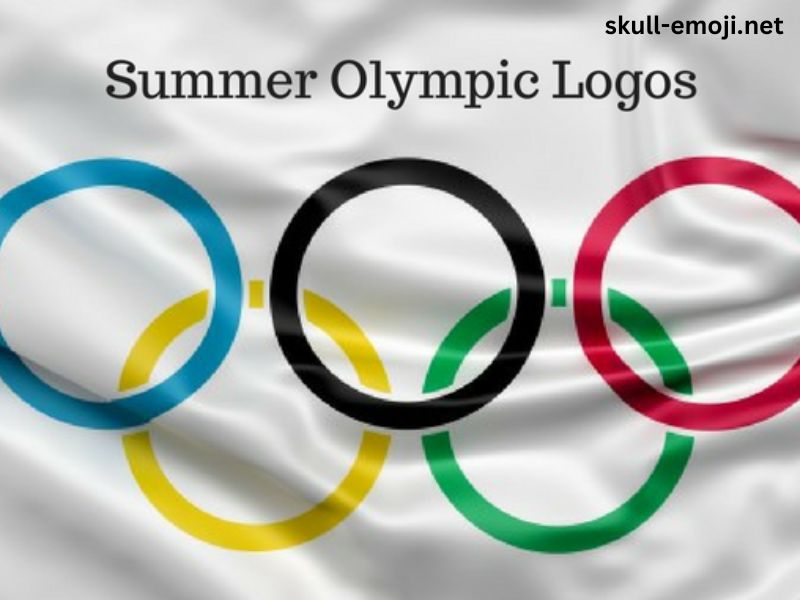The Summer Olympics, officially known as the Games of the Olympiad, is a global sporting event that captivates audiences with a display of athletic excellence and international camaraderie. Held every four years, the Summer Olympics features a diverse array of sports, each showcasing unique skills and cultural significance. This article provides an in-depth look at the various sports that have graced the Summer Olympic Games, offering insights into their history, evolution, and current status.
1. Athletics
Overview: Athletics, often referred to as track and field, is one of the most prominent and diverse sports in the Summer Olympics. It encompasses running, jumping, and throwing events.
History: Athletics is considered one of the original Olympic sports, dating back to the ancient Games of Greece. Modern athletics includes various disciplines such as sprints, distance running, hurdles, relays, long jump, high jump, pole vault, and decathlon.
Current Status: The athletics program remains a staple of the Summer Olympics, with events like the 100 meters, marathon, and 4×100 meters relay attracting significant attention.
2. Swimming
Overview: Swimming is another core component of the Summer Olympics, featuring individual and team events across various distances and strokes.
History: Swimming has been part of the modern Olympics since 1896. Initially dominated by freestyle events, it has expanded to include breaststroke, backstroke, butterfly, and individual medley races.
Current Status: Swimming is renowned for its spectacular performances and world records. Events include the 50 meters freestyle, 200 meters individual medley, and the 4×100 meters relay.
3. Gymnastics
Overview: Gymnastics showcases the artistry and precision of athletes performing routines on various apparatuses.
History: Gymnastics has been included in the Olympics since 1896 for men and 1928 for women. It features events such as the vault, uneven bars, balance beam, and floor exercise.
Current Status: The sport is known for its dramatic performances and technical difficulty. The all-around competition and team events are major highlights.
4. Diving
Overview: Diving involves athletes performing acrobatic maneuvers from diving platforms or springboards before entering the water.
History: Diving has been part of the Olympics since 1904. The sport includes both individual and synchronized events, with athletes judged on their technique, execution, and entry.
Current Status: Diving events such as the 10 meters platform and 3 meters springboard are crowd favorites, celebrated for their precision and grace.
5. Rowing
Overview: Rowing features athletes competing in boats over a set distance, using oars to propel themselves through the water.
History: Rowing has been included in the Olympics since 1900. It involves various boat classes and distances, including single sculls, double sculls, and eights.
Current Status: Rowing remains a key sport in the Summer Olympics, known for its team coordination and endurance.
6. Fencing
Overview: Fencing is a combat sport where athletes use swords to score points by touching their opponents with the tip of the blade.
History: Fencing has been part of the Olympics since 1896. It features three disciplines: foil, épée, and sabre, each with distinct rules and techniques.
Current Status: Fencing is celebrated for its speed, agility, and strategy, with individual and team events showcasing athletes’ skills.
7. Basketball
Overview: Basketball is a team sport where players aim to score points by shooting a ball through the opponent’s hoop.
History: Basketball was introduced to the Olympics in 1936. The sport has grown in popularity, with professional leagues and international competitions adding to its prestige.
Current Status: Basketball features both men’s and women’s tournaments. The sport is known for its fast pace and high-scoring games.
8. Volleyball
Overview: Volleyball includes both indoor and beach variants. The sport involves teams trying to score points by hitting a ball over a net.
History: Indoor volleyball became an Olympic sport in 1964, while beach volleyball was introduced in 1996. Both formats have become popular among spectators.
Current Status: Volleyball events feature intense matches and strategic play. The beach volleyball tournaments, in particular, are known for their vibrant atmosphere.
9. Water Polo
Overview: Water polo is a team water sport that combines swimming with ball-handling skills.
History: Water polo has been included in the Olympics since 1900. The sport involves teams trying to score goals while treading water.
Current Status: Water polo is known for its physicality and endurance, with both men’s and women’s tournaments drawing significant attention.
10. Wrestling
Overview: Wrestling involves athletes competing in matches where they aim to pin their opponent’s shoulders to the mat.
History: Wrestling has ancient origins and has been part of the modern Olympics since 1896. It includes freestyle and Greco-Roman styles.
Current Status: Wrestling remains a core Olympic sport, with athletes competing in various weight classes and showcasing a combination of strength and technique.
11. Cycling
Overview: Cycling includes road racing, track cycling, mountain biking, and BMX. Each discipline features unique challenges and skills.
History: Cycling has been part of the Olympics since 1896. The sport has evolved to include various formats and events, such as the individual time trial and team pursuit.
Current Status: Cycling is known for its exciting races and diverse events. The Olympic program features road races, time trials, and track events, each with its own set of strategies and techniques.
12. Judo
Overview: Judo is a martial art where athletes aim to throw or pin their opponent to the ground.
History: Judo was introduced to the Olympics in 1964. The sport emphasizes technique and balance, with athletes competing in various weight categories.
Current Status: Judo is celebrated for its technical skill and tactical depth. The sport features individual and team competitions, showcasing athletes’ expertise in throws and holds.
13. Taekwondo
Overview: Taekwondo is a Korean martial art known for its high, fast kicks and dynamic techniques.
History: Taekwondo became an Olympic sport in 2000. The sport focuses on kicking techniques and includes both sparring and forms (poomsae).
Current Status: Taekwondo is known for its vibrant and energetic performances. The Olympic program includes weight categories for both men and women, with athletes competing in sparring events.
14. Modern Pentathlon
Overview: The modern pentathlon is a multi-discipline sport that combines fencing, swimming, show jumping, running, and shooting.
History: The modern pentathlon was introduced to the Olympics in 1912. It was designed to test a range of athletic skills in a single competition.
Current Status: The modern pentathlon remains a unique and challenging event. Athletes compete in five different disciplines, showcasing versatility and endurance.
15. Canoeing
Overview: Canoeing includes both sprint and slalom events, where athletes race in kayaks or canoes through designated courses.
History: Canoeing has been part of the Olympics since 1936. Sprint events involve racing over flat water, while slalom events feature navigating through a course with gates.
Current Status: Canoeing is known for its speed and precision. The sport includes individual and team events, with athletes demonstrating their skills in both flatwater and whitewater conditions.
16. Rowing
Overview: Rowing features athletes racing in boats using oars to propel themselves through water.
History: Rowing has been included in the Olympics since 1900. It includes various boat classes, such as singles, doubles, and eights.
Current Status: Rowing remains a significant part of the Olympics, celebrated for its teamwork and endurance.
17. Sailing
Overview: Sailing involves navigating boats across water courses, relying on wind and sail techniques.
History: Sailing has been part of the Olympics since 1900. The sport includes various classes of boats, each with its own set of rules and requirements.
Current Status: Sailing is known for its strategic depth and tactical decisions. Olympic events feature a range of boat classes, from small dinghies to larger keelboats.
18. Archery
Overview: Archery involves shooting arrows at a target from a set distance.
History: Archery has been part of the Olympics since 1900. The sport includes both individual and team events, with athletes competing in recurve and compound bow categories.
Current Status: Archery is known for its precision and focus. The sport features events like the individual and team recurve competitions, showcasing athletes’ accuracy and skill.
19. Equestrian
Overview: Equestrian sports involve horse riding and include dressage, show jumping, and eventing.
History: Equestrian events have been part of the Olympics since 1900. The sport combines skillful riding with horse training and includes various disciplines.
Current Status: Equestrian sports are known for their elegance and technical complexity. The Olympic program features individual and team events, highlighting the partnership between horse and rider.
20. Handball
Overview: Handball is a team sport where players pass and dribble a ball to score goals in the opponent’s net.
History: Handball was introduced to the Olympics in 1936 (indoor) and 1972 (field). The sport is played in both indoor and outdoor formats, with the indoor version being more prominent.
Current Status: Handball is known for its fast pace and high-scoring games. The Olympic tournaments feature intense matches and skilled teamwork.
21. Rugby Sevens
Overview: Rugby sevens is a variant of rugby union with seven players per team, played over shorter matches.
History: Rugby sevens was added to the Olympics in 2016. The sport is known for its speed and high-scoring games, with each match consisting of two halves.
Current Status: Rugby sevens has gained popularity for its exciting and fast-paced gameplay. The Olympic events feature both men’s and women’s tournaments.
22. Skateboarding
Overview: Skateboarding involves athletes performing tricks and stunts on a skateboard.
History: Skateboarding made its Olympic debut in 2020. The sport includes events such as street and park skateboarding, showcasing creativity and technical skill.
Current Status: Skateboarding is celebrated for its dynamic and innovative tricks. The sport appeals to a younger audience and has become a popular addition to the Olympic program.
23. Surfing
Overview: Surfing involves athletes riding waves on a surfboard, performing maneuvers and tricks.
History: Surfing was introduced to the Olympics in 2020. The sport takes place in natural ocean waves, with athletes judged on their performance and style.
Current Status: Surfing is known for its connection to nature and the ocean. The Olympic events feature individual competitions, highlighting the athletes’ skill and creativity.
24. Sport Climbing
Overview: Sport climbing includes disciplines such as lead climbing, bouldering, and speed climbing, where athletes climb artificial or natural rock walls.
History: Sport climbing made its Olympic debut in 2020. The sport combines strength, technique, and speed, with climbers competing in different disciplines.
Current Status: Sport climbing is known for its dynamic and challenging routes. The Olympic events feature a combination of climbing disciplines, showcasing athletes’ versatility and skill.
25. Karate
Overview: Karate is a martial art that includes striking techniques such as punches, kicks, and knee strikes.
History: Karate was introduced to the Olympics in 2020. The sport features kata (forms) and kumite (sparring) events, highlighting athletes’ technical proficiency and combat skills.
Current Status: Karate is celebrated for its precision and discipline. The Olympic program includes individual and team events, showcasing a range of techniques and styles.
Conclusion
The Summer Olympics represents a unique convergence of sports, culture, and international unity. Each sport, from athletics and swimming to emerging disciplines like skateboarding and surfing, adds its own flavor to the Games, creating a diverse and exciting competition. As the Olympic movement continues to evolve, the inclusion of new sports reflects the dynamic nature of global athletics and the ever-expanding interests of the global audience. Whether rooted in ancient traditions or modern innovations, the sports of the Summer Olympics provide a captivating showcase of human achievement and athletic prowess.



